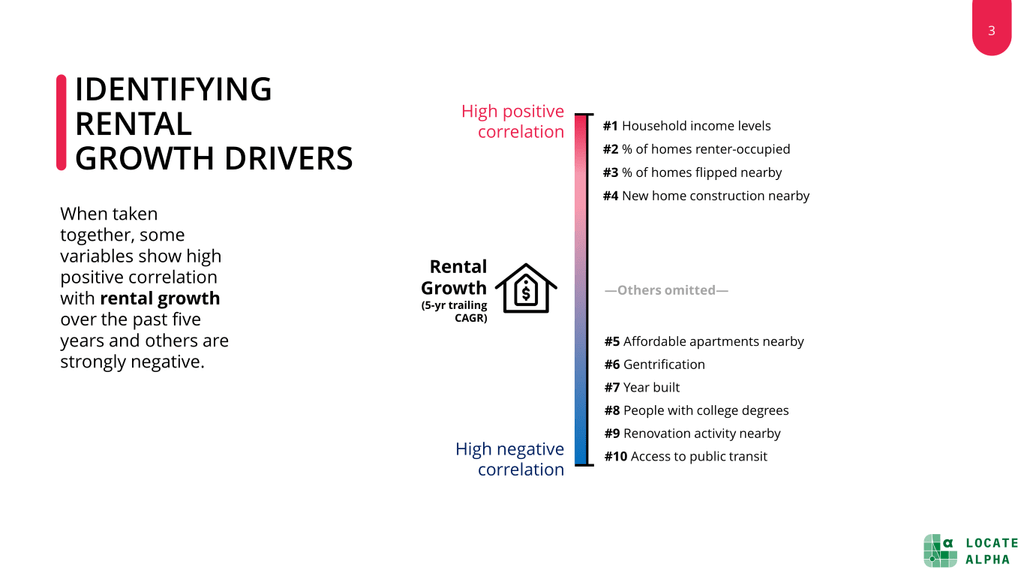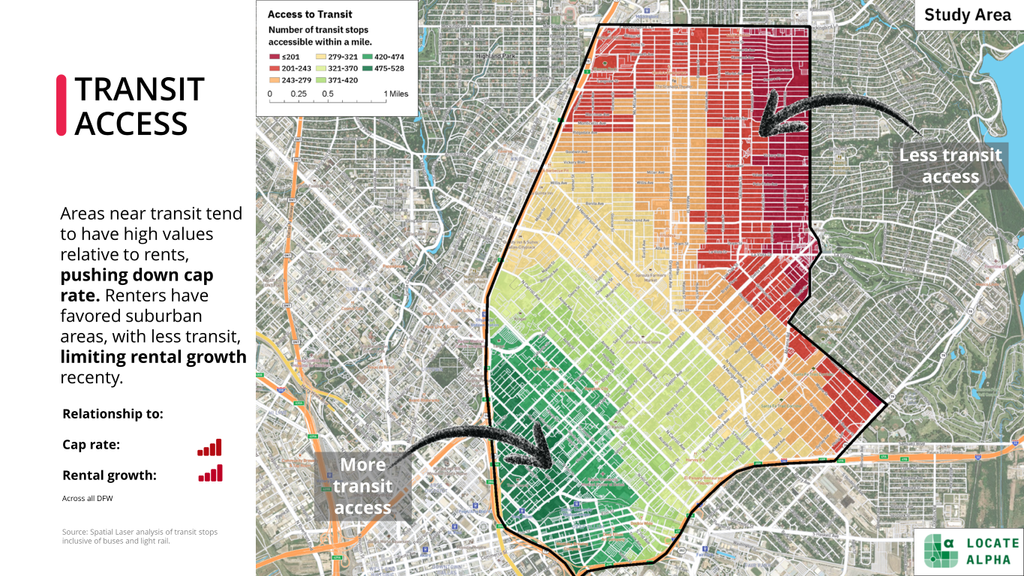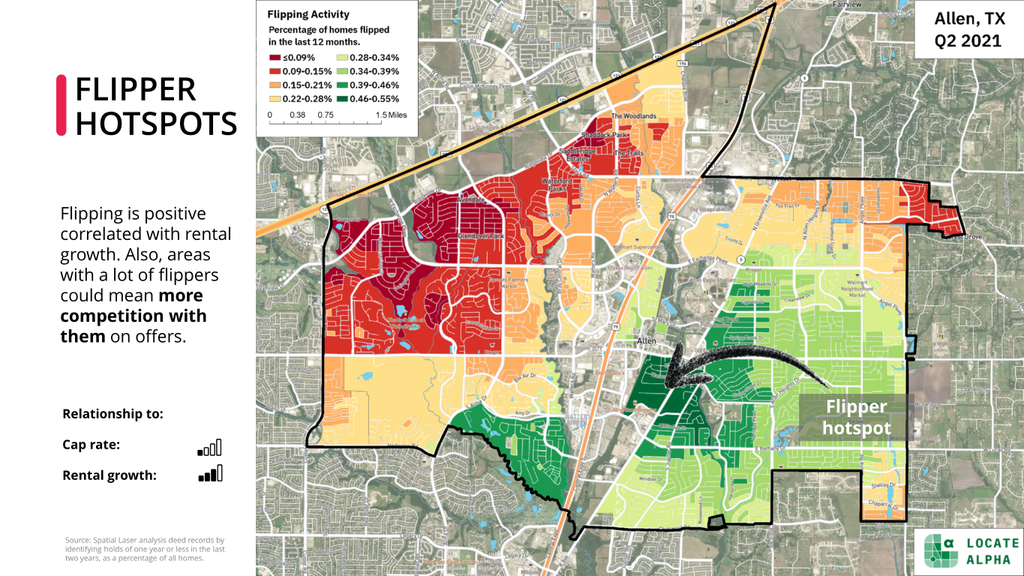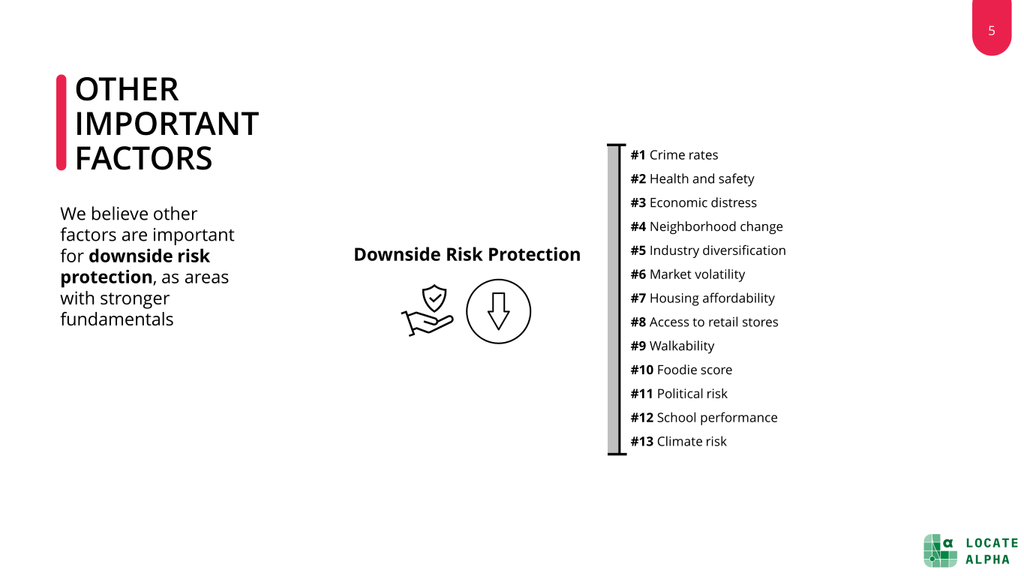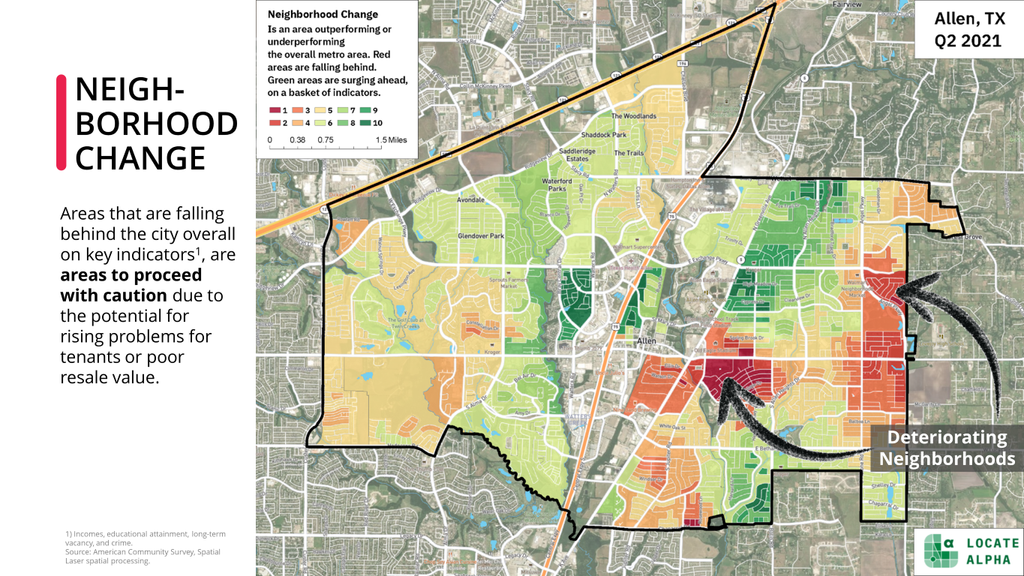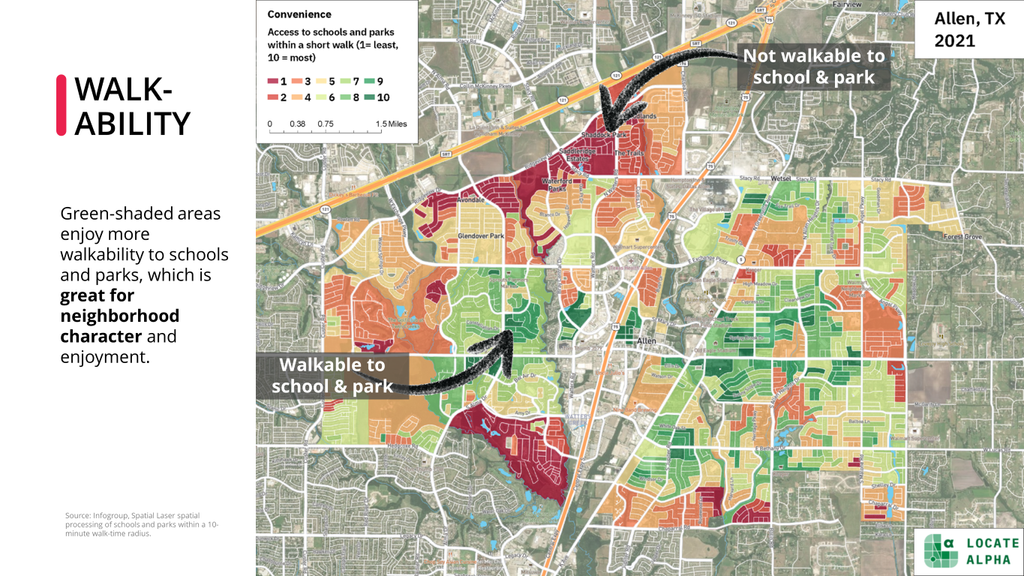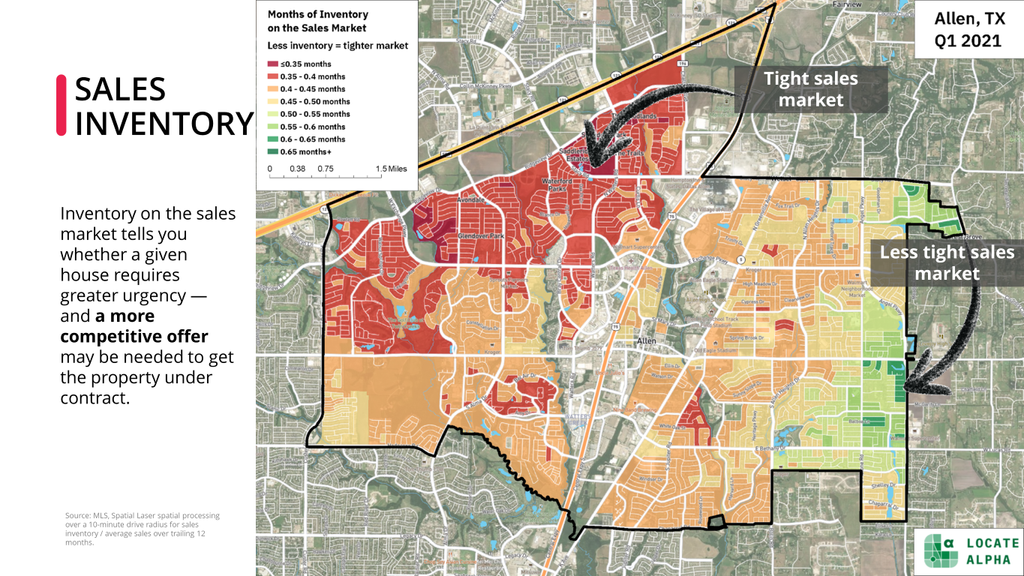Locate Alpha is full of information to describe investment locations. But what made us choose the variables that we did? How do we know — and prove — that what we put on the scorecard to describe a neighborhood is relevant information?
Are local conditions going to result in an outcome that is better than a random strategy akin to throwing darts at the board? After all, if you bought 100 houses, you’d probably turn out fine due to the benefits of diversification.
Or, could you do better?
At one level, many neighborhood characteristics seem to be common-sense indicators. An investor is likely to do better in an area with a lot of jobs nearby, so that they can lease up their rental properties more quickly. However, the real effect of a particular factor like this on financial performance may be less straightforward than we assume.
In this analysis we will dive into what drives rental growth.
Rental growth factors
In our previous article, we showed how rental growth spiked sharply in the last twelve months, in some cases up to 20% in the Dallas area, where we ran this particular analysis. We included dozens of potential factors that form the Locate Alpha suite of location scores (or KPIs).
When taken together, some factors show a strong relationship with rental growth over the past five years. Some have a positive effect, and others have a negative effect.
Example #1: Transit access – a short term effect
Transit access had a strong negative effect on rental growth. This is because during the pandemic, there was a strong bias against urban areas as people fled cities. Urban areas tended to be those with more public transportation.
Example #2: Flipper hotspots – a long-term effect
Flipping of homes is a positive driver of rental growth. This is because newly flipped homes are rented out at a premium because they were just upgraded.
Downside risk factors
Are all of our variables meaningful predictors financial performance? No. Therefore, we have a second category that we consider to be downside risk factors. These are equally important.
They matter for protecting your investment’s value and reducing downside risk. You could have high returns in many areas today. But, in a downturn, some areas will bear the brunt of a weaker economy more than others.
Example #1: Neighborhood change
Areas that are falling behind the city’s overall progress (with education, income, and other factors) are areas to proceed with caution due to the potential for problems or poor resale value. They aren’t necessarily no-go areas but this could be a deal-killer if other too many other indicators are also negative.
Example #2: Walkability
Walkable neighborhoods offer unparalleled convenience. We built our own index of walkability that works in a single-family home community: that means not looking at restaurants and bars like some of the more typical walkability indices, but looking at parks and schools. Areas shown in green are well positioned to benefit from that.
Market indicators
Lastly, some things are just straightforward market indicators. They are not really drivers of a financial result, but tell you about the environment you are trying to acquire in. Take sales inventory as an example. This varies quite a bit even within a single ZIP code and can be a useful indication of how bad a supply shortage issue really is, and this informs your bidding strategy.
A crystal ball?
Have we built a crystal ball? No. But what we can do is say that the information we are showing is relevant due to 1) strong relationships with financial performance, or 2) useful information to protect against future downside. If you would like a full copy of this report, please contact me at the e-mail address below.


